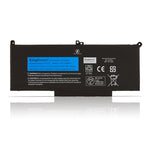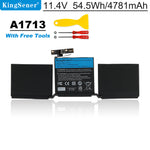You have no items in your shopping cart.
How to fix my damaged charger?

Whether you're using a smartphone, laptop, tablet, or other device, a damaged charger can be frustrating and inconvenient. This article can teach you some ways to fix this problem without having an electrician's license.
There are several basic reasons why a charger stops working:
●The wall socket is turned off or damaged.
●The charger is damaged.
●The device power port is damaged.
How to Repair a Broken Charger
While some fixes may require rewiring, you can try to get a damaged charger working again.
1. Make sure the socket is turned on.
Some European sockets have separate switches. U.S. homes may use switched surge protectors, light switches or circuit breakers that control wall sockets. You may need to reset a tripped circuit breaker.
2. Make sure the cables are connected correctly.
Unplug all cables from the system, wait a few minutes, and then carefully reconnect the cables properly. When reinstalling, verify that all connections are tight and accurate.
3. Look for lights.
Does the status light come on if you're using a damaged Mac charger? The same goes for the status lights in laptop chargers and portable charger battery packs.
4. Restart the charging device.
The device controls most of its charging behavior, so restarting the device can help with charging detection issues.
5. Try different outlets.
Sockets are powerful, but can fail. To confirm that the socket is working, check out the multimeter tips below.
6. Check the charger for damage.
If you see bare wires, peeling insulation, or wire shielding, it may be the source of the problem. Also, plug in the cable and wiggle the cable at both ends.
If the charger works intermittently while moving the cable, the copper wire of the cable is damaged. If possible, replace the wires with new ones.
Warning:
Do not attempt to wiggle the cable at both ends if there are bare or damaged wires. This could result in electric shock.

Kingsener 18.5V 3.5A 65W Replacement Laptop Charger AC for HP Power Adapter Compaq 6720s 500 510 520 530 G3000 4.8*1.7mm
7. Check the components.
Temporarily remove adapters, outlet splitters, power strips or surge protectors, and any extra components in order to plug the charger into an outlet that is known to work.
If the outlet works, but the charger doesn't activate, the problem isn't the wall outlet.
If the charger works fine when plugged into the wall, the problem is with one of the components that was removed. Add the other sections one by one until the system fails, but don't stop there. Try adding pieces in a different order or in a different location.
8. Clean the charging port.
If you don't feel a click when connecting the charging cable, look inside the charging device. With Lightning and USB-C charging ports, users found that anything from a lint in their pocket to a grain of rice caught in the port would prevent their phone from charging.
Remove any litter with plastic tweezers, cotton swabs, or toothpicks.
Warning:
Never stick metal in the charging port. If you insert a piece of metal into the charging port the wrong way, you could short out the connection and damage the device.
9. Try different cables and power adapters.
The biggest culprit of a faulty charger is a faulty charging cable. The cable experiences the most stress over time, so it tends to fail first.
Use a different USB charging cable and adapter and see if the problem resolves itself. Replace one at a time to pinpoint the culprit.
10. Clear the USB port.
If the USB port is not making good contact due to shielding, cable design, port equipment, or other factors, removing the barrier can solve the problem.
If the sheet metal housing of the USB port has deformed over time, it is easy to bend it back to its original shape. For modern USB Micro and USB-C devices, bend the tongue inside the charging port if it doesn't fit.
Warning:
To avoid electric shock, be sure to power down the device before attempting any physical electrical repairs.
11. Check battery life and health.
Check the battery's health and age to see if it needs to be replaced.
If you can remove the laptop's battery, replace the battery and see if the problem persists. You can also calibrate old batteries.
12. Check the compatibility of the charger.
Laptop chargers are more finicky, as you can rarely swap out another charger without a problem.
Only the correct combination of adapters and cables can take advantage of the full capabilities of the device. If you think you are using an incompatible cable, get one that is compatible with your device.

Kingsener A1494 11.26V 95WH Laptop Battery for Apple MacBook Pro 15 inch A1398 Retina (Late 2013 & Mid 2014) ME293
Charger FAQ
Why isn't my iPhone charger working?
If your iPhone charger isn't working properly, your charging cable or USB adapter might be damaged.
There may be debris in your iPhone charging port, or your charging port may be damaged. Or, you might be using a charging accessory that isn't certified by Apple.
Why is my wireless charger not working?
If your wireless charger isn't working, it might be because it's not plugged in properly, your phone case might be getting in your way, or your device might not be properly aligned with the wireless charger.
Also, your wireless charger might not be powerful enough or compatible with your device.
Why isn't my MagSafe charger working?
The removable AC plug might be faulty, debris might be interfering with the power port, or your computer might need an update to help it communicate better with the power adapter.
Read our MagSafe charger review to learn more.
If this article still doesn't help your laptop battery, you can buy a new battery at BatteryMall.com.
If you want to learn more about batteries, please visit:BatteryMall.com/blogs/support









comments (3)